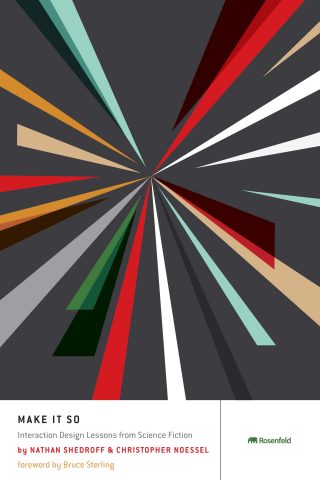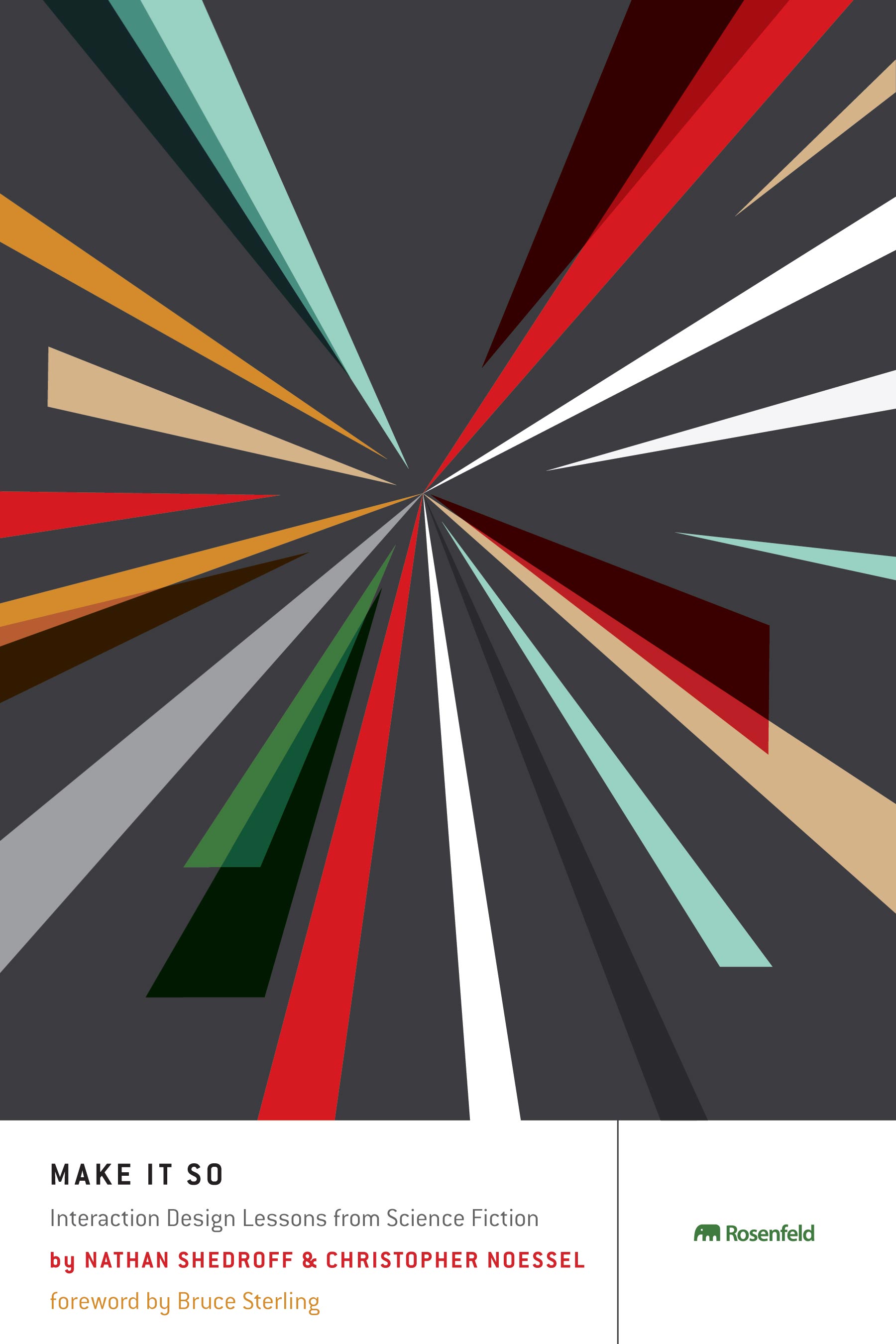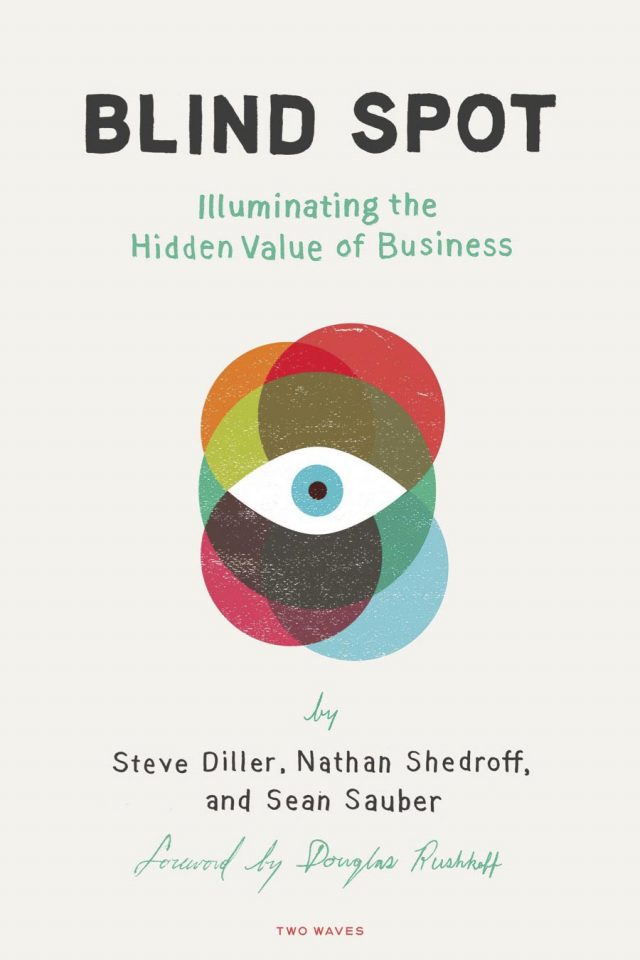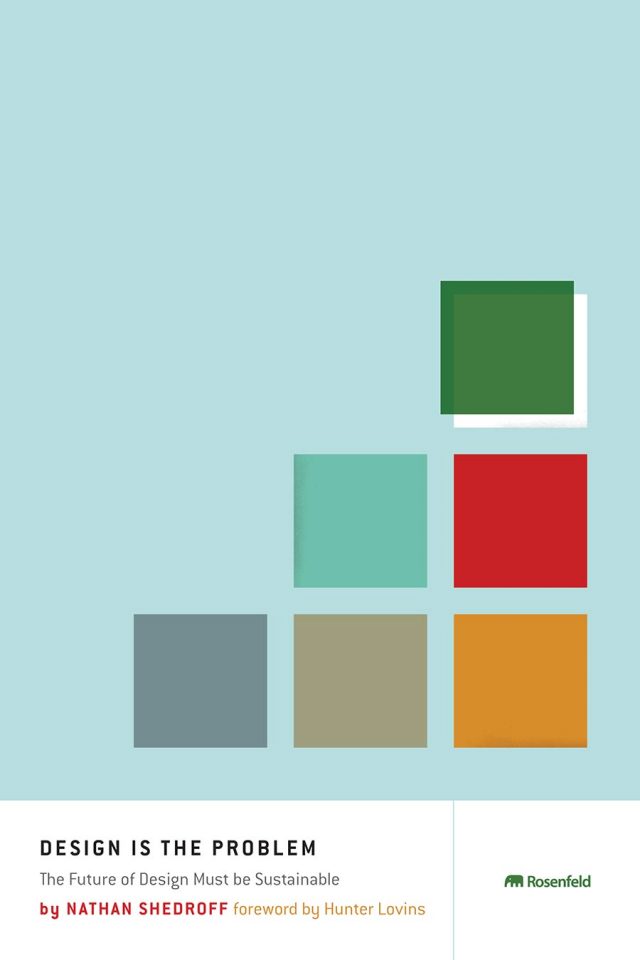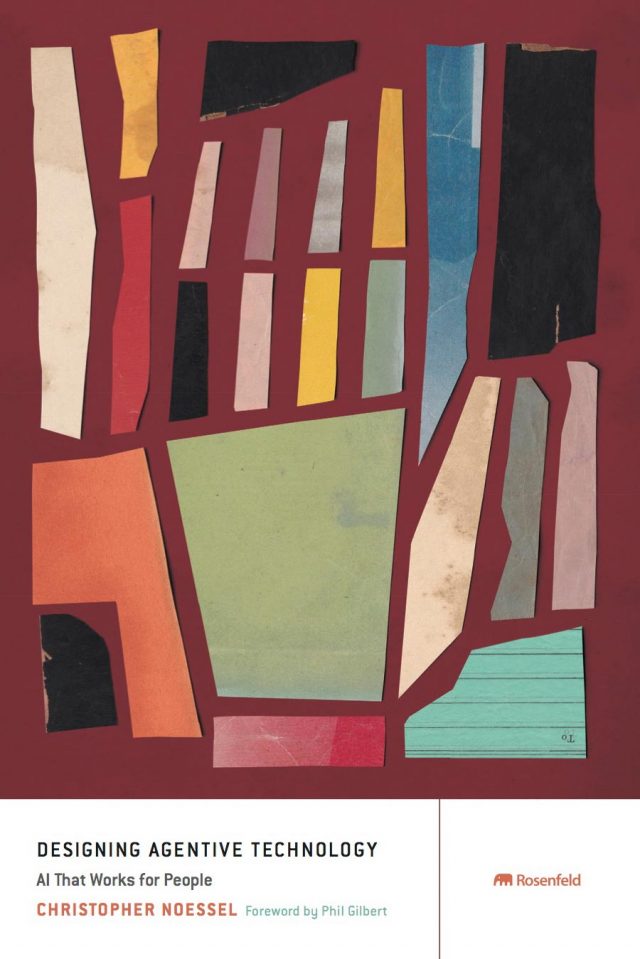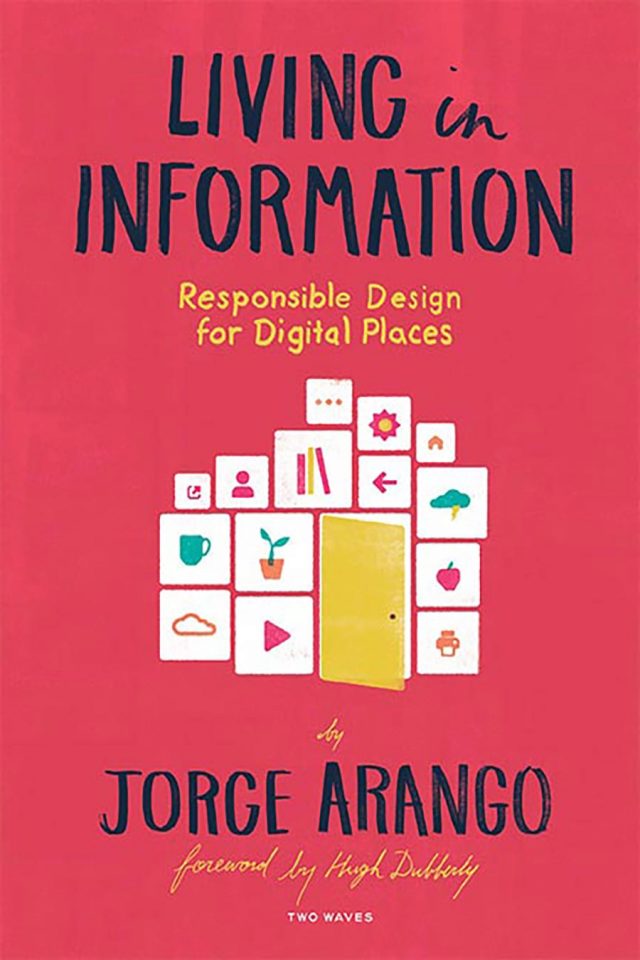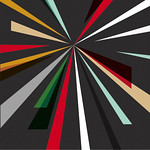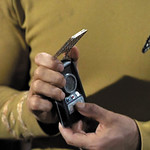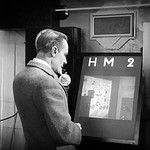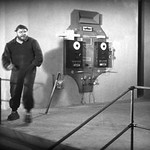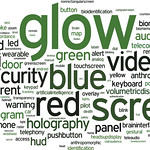They Made It So
This book has accomplished a feat that’s valuable and rare: it comprehends design and science fiction. Better yet, it’s found specific areas where they are of practical use to one another. This is a design book, and meant for designers. It concerns itself with science fiction cinema. To my delight, it does this in a deft, thoughtful, and sympathetic way.
Make It So never asks science fiction to be “scientific.” More tactfully, it doesn’t even ask that science fiction be “fictional.” Instead, this book comprehends the benefits that science fiction can offer to designers. There aren’t a lot, but there are some. Those benefits are all about making the unthinkable thinkable. “Cognitive estrangement,” as we science fiction people call that in our trade.
Make It So teaches designers to use science fiction as a designer’s mood board. It’s science fiction as an estranging design tool, a conceptual approach, best suited for blue-sky brainstorming, for calling the everyday into question, and for making the exotic seem practical. This approach allows designers to derive all kinds of exciting design benefits that science fiction never intended to bestow on designers.
How do the authors do it? With a classic, people-centered design approach. They look and they listen. They are at ease with the creators of science fiction cinema, because they can enter into their worldview.
Consider Georges Méliès, that silent-film maestro of cinema’s earliest days, that French stage magician turned movie fantasist. For most of us, Méliès is a remote historical figure whose accented French name is hard to properly spell. He’s of real, immediate use to Shedroff and Noessel.
Even us science fiction writers—(I write novels, by the way)—we rarely derive any coherent inspiration from our remote spiritual ancestor, Georges Méliès. But Shedroff and Noessel are able to enter into the Méliès conceptual universe with all the attentive consideration that designers commonly grant to users. So the authors of this book can see that the best-known film of Georges Méliès, A Trip to the Moon (Le voyage dans la lune), has no interfaces. That’s the truth, of course—obviously a silent-film spaceship from 1902 has no interfaces, because the very concept of an “interface” didn’t show up until the 1960s. However, it requires a design perspective to see past the frenetic razzle-dazzle on the silver screen and point that out. Méliès was a major media pioneer, and yet he was interfaceless.
Furthermore, this is an exciting and refreshing thing for a science fiction writer to read. Although Shedroff and Noessel don’t intend to write their book for us science fiction creatives, I’d boldly say that they’re every bit as useful to us as we could ever be to them. Méliès had no interfaces. This startling realization blows the dust of the ages off of Méliès and conveys a new sheen to his time-dulled glamour and wonderment. As soon as I read this, I put the text of Make It So aside— (because, to tell the truth, I was reading the book on a screen)—and I sought out and watched the Méliès 1902 film on YouTube (on the same screen). The authors are correct. Try it for yourself! The characters in this Méliès movie are inhabiting an attitude toward technology that’s alien to us. Watch them go through their entirely mechanical design paradigm, all anvils and chalkboards. They have no push buttons, no rheostats, no dials, no screens, no return keys. They have no systematic abstraction of the forces that surround them, other than books and papers. They’re on a sci-fi trip to the Moon to meet space aliens, and they might as well be paddling a steel canoe. How mind-stretching that realization is.
Furthermore, Shedroff and Noessel gently suggest—(this book was written by designers, so they’re very urbane, low key, and eager to be of service)— they suggest that, for an interface designer, the best way to look at a Méliès spaceship is as a potential way forward. Not a historical curiosity, a thing frozen on aging film like a fossil in amber, but a potential future for interface design. What a fascinating thing to say! What if the controls of future spacecraft were so natural, so intuitive, so invisible, that they were Mélièslike in their magical simplicity? Why has no science fiction writer yet written this scene? Where is the science fiction set within a gesture-controlled, augmented, and ubiquitous environment? I’ve often wondered that—but I know that it’s difficult to conceive, it’s hard to sketch out as any workable scenario. It never occurred to me such a high-tech situation might have the look and feel of Méliès’ fantasy movie: ritualized, formal, very gestural, everything tightly framed. It’s a brilliant notion, though. It jolts that prospect from the remote to the immediate. Why, it’s almost tangible.
People commonly expect science fiction to be predictive. Shedroff and Noessel, to their credit, avoid that mistake. I happen to believe that science fiction often is predictive: but so what? If you successfully predicted 1975 while you were writing in 1960, there’s no reason why anyone nowadays would know or care about that. The works of science fiction that last are never accurate forecasts. They’re compelling evocations—they’re visionary grotesques, funhouse mirrors. That funhouse mirror is never accurate, yet it doesn’t merely deceive either—it always bears its human intent to inspire wonderment, its innate need to capture the imagination. Sci-fi, even at its most analytic and mechanical, is always haunted, allusive, and esoteric. Sci-fi is like a Rorschach blot the size of a house. Make It So is like sci-fi film critique, but of a new kind: with kindly instructors equipped with a remote control and a freeze-frame. They deliberately break sci-fi cinema into its atomic design elements. It’s wonderful how they waste no time with any stereotypical sci-fi criticism—the characters, the plot, the so-called political implications. Legions of other critics are eager to get after that stuff, whereas Shedroff and Noessel have created a lucid, well-organized design textbook. I recommend this textbook for class work. I can’t doubt for a moment that contemporary students would be illuminated and grateful.
Science fiction and design have a relationship: it’s generally cordial, yet remote. Design cannot realize the fantasies of science fiction. Science fiction can’t help design with all its many realistic problems. Design and science fiction were born in the same era, but they’re not family: they’re something like classmates. The two of them have different temperaments. Sometimes design is visionary and showy, and in sync with its classmate, sci-fi. At other times, design is properly concerned with its own issues of safety, utility, maintenance, and cost, areas where science fiction always stares moodily out the window. But eras appear when the technological landscape changes quickly and radically, and design and science fiction are dragged along in tandem.
Interface design is one of those areas, and inhabiting one of those times. Science fiction is unlikely to be of great help in the task of giving form to a vase. However, interface design requires a certain mental habit of speculative abstraction. That isn’t science fiction, but it’s not so far as all that. “Interaction design” is quite similar to “interface design”—interaction designers are obsessed with boxes and arrows, not clay or foamcore. When design genuinely needs to be conceptual and abstract, science fiction can put a face on that. Science fiction can embody and literalize that, it can tell that story. Somewhere over the horizon, beckoning at us, is “experience design.”
This is something we associate with computer games and thrill rides and imaginary Star Trek holodecks, but it will likely have something to do with tomorrow’s cloudy, post-cybernetic environments. When it comes to battling those obscure future phantoms, design and sci-fi are in a masked wrestler tag-team match. It’s us—an unlikely duo—against that, a futuristic prospect. We’re gonna pin that phantom to its augmented, ubiquitous mat someday, but it’s gonna take some sweat and bruises first.
It will take sweat, bruises, and also some intense blue-sky thinking. Some of that is already visible within modern big-budget sci-fi movies—Minority Report, Iron Man, they’re full of pricey interface thrills, just as these authors will show you. But, increasingly and interestingly, a great deal of that necessary conceptual work will never appear in big movies, but in small-scale, atelier-like, design-centered videos. It will appear on this screen, not the big silver screen but this interactive, designed screen, the screen where I read this book, and where I saw that public-domain Méliès movie. This is no accident. I like to call this small-scale, speculative work “design fiction.” Design fiction is the deliberate use of diegetic prototypes to suspend disbelief about change. There’s a lot of “diegetic prototyping” going on now, and that situation has come to exist, primarily, because of interface design. It is a consequence of interfaces built for the consumption and creation of what used to be called “text” and “film.”
The movies, and television, as analog industries, as 20th-century commercial entities, would never have done that on their own. They would never have imagined the viral creation and global spread of speculative videos about futuristic products and services. This did not fit their business model. It was outside their paradigm.
Even science fiction writers didn’t imagine that. But it’s an area of great ferment: these attempts to employ digital media to convince people to transform conceptual things into real things. I see it every day. Interface design is powerful. It changed my life, and I expect it to transform my future life even more so. People who read this book will be better equipped to undertake that effort. I never imagined that I would be reading a book like this, or that it would be this good.
—Bruce Sterling
Turin, Italy, May 2012
